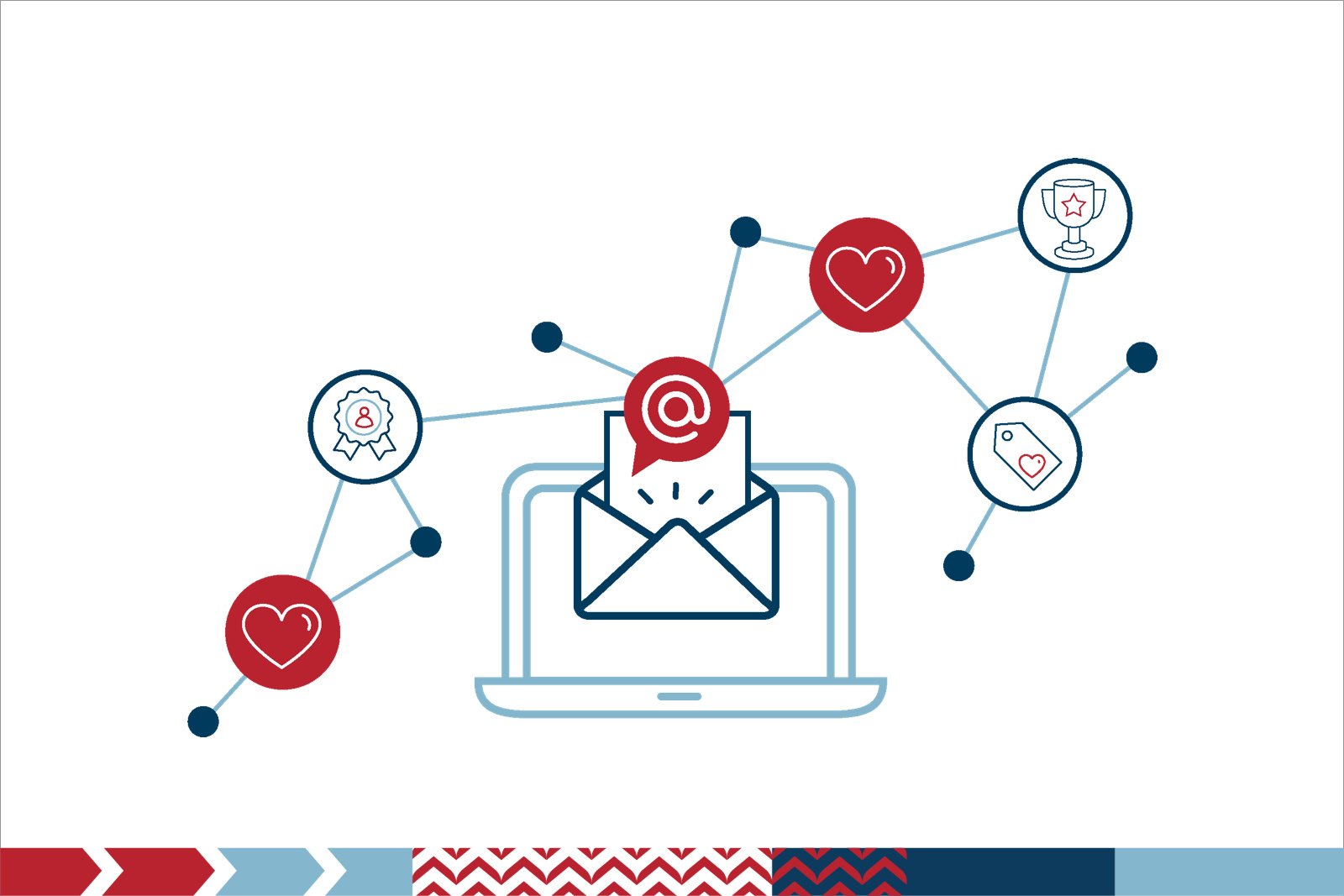The Renaissance of Text Marketing

Marketers frequently refer to text messaging as marketing’s most underutilized channel. Brands use text messaging in many functional ways, even for marketing, but texting has been limited by constraints—such as texting limits on mobile phone contracts—that don’t affect most other channels. Recent technology advancements, however, position texting to finally become a standalone marketing communications channel.
Text messaging has evolved well beyond the numeric keypad
Since its inception, short messaging service (SMS) has been a common way to deliver timely messages. But various factors have hindered texting. Early on, it was physically difficult to compose text messages using mobile phones’ numeric keypads. Plus, many cell service providers limited the number of texts a user could have each month, or even charged users to receive and send SMS messages.
By the time alphabetical keypads allowed texts to be more easily composed and most cell carriers offered unlimited texting, email and app-based push messaging were already key engagement drivers. Even the advent of multimedia messaging service (MMS), which supports visuals in text messages, provided little incentive for marketers to shift away from tested digital channels.
Consumers show a strong preference to receive mobile marketing messages through texts. In fact, participants in one study said they prefer texts nearly three times more than app push messages. Nonetheless, texts largely remain an efficient means to serve up promo codes and order updates.
But the accelerating adoption of rich communication services (RCS)—a new, interactive messaging protocol—by smartphone makers is likely to change the text-marketing paradigm. In late 2019 Google rolled out RCS chat as a texting option to all U.S. Android users. Then, in August 2023, RCS became the default text-messaging method for all new Android mobile devices. Soon after, Apple announced plans to make RCS standard for the iMessage platform sometime in 2024.
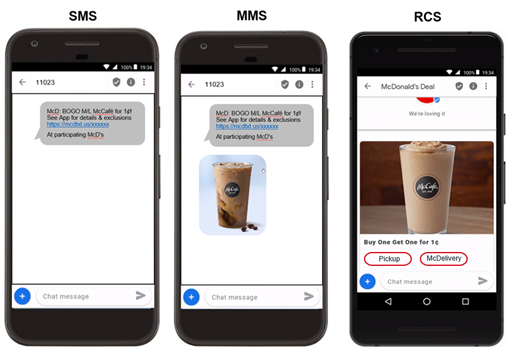
RCS chats bring new interactive options
RCS meets present-day consumers’ need for increased interactivity, security, and visuality in personal and transactional messages.
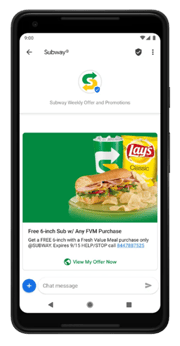 Additional security. A primary selling point for RCS is its automatic encryption, which secures text exchange privacy. This end-to-end encryption applies to both individual and group text conversations. (Even though Apple didn’t pioneer RCS technology, it’s a natural fit for the brand, given its desire to be a leader in data privacy.) Brands’ messaging to text subscribers will also benefit from sender verification, an additional RCS security feature.
Additional security. A primary selling point for RCS is its automatic encryption, which secures text exchange privacy. This end-to-end encryption applies to both individual and group text conversations. (Even though Apple didn’t pioneer RCS technology, it’s a natural fit for the brand, given its desire to be a leader in data privacy.) Brands’ messaging to text subscribers will also benefit from sender verification, an additional RCS security feature.
Example: Subway
Fast-food giant Subway piloted RCS messaging to create a branded experience that ensures engagement through trusted content. Like brand authentication requirements on social media platforms, RCS encryption helps reduce phishing and other fraud.
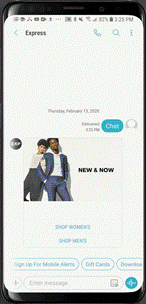 Dynamic interactivity
Dynamic interactivity
The most exciting feature exclusive to RCS is its increased interactivity options. RCS messages support menu boards and allow complementary buttons for intuitive chat conversations and dynamic conversion paths.
Example: Express
Fashion retailer Express employs RCS interactivity to enable message recipients to browse sale items directly in the text environment, rather than being directed to the app or a browser tab. While the entire purchase process may not take place in the RCS text message, being able to quickly view sale items drives greater engagement.
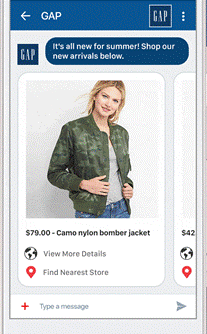
Enriched visual options First-time recipients of RCS-based text messages will notice a giant leap forward in visuals. While MMS messages can include rich media, RCS goes much further by allowing multiple images and more immersive delivery.
Example: Gap
Gap has taken its text marketing to a new level by using RCS for tailored shopping experiences. It sends dynamic messages that seamlessly inject online shopping into text marketing with product carousels and one-click order links. Even more impressive are its personalized product recommendations, available to every subscriber. Gap text-marketing content is sophisticated, compelling, and relevant—all made possible by the dynamic visual capabilities of RCS.
RCS drives greater results for brands
Google has invested heavily in RCS for Android phone users—to bolster users’ personal benefits but also to pave the way for new marketing opportunities. Google research found overwhelming evidence that RCS will prove a valuable conversion channel for brands of all sizes. Key findings include:
- 72% of consumers are more likely to purchase online if they can ask questions in real time.
- 74% of consumers are more likely to engage with a brand through RCS.
- Consumers are 35 times more likely to read RCS messages than email.
RCS text messaging can now be a standalone marketing channel, no longer just complementary to emails and websites. In fact, several brands are already realizing significant results. Subway, for instance, reported a 140% increase in sandwich orders from its RCS pilot—compared to the same promotion delivered through SMS. Also, Sonic’s RCS test yielded five times more app downloads and three times more registrations than its MMS campaign.
Brands should start exploring RCS
With the total number of active RCS users estimated to reach 1.2 billion globally by 2025, soon a critical mass of customers will be able to receive these enhanced messages. And that forecast doesn’t include iOS users, so the number could nearly double to 2 billion users once Apple integrates RCS into its text platform.
In a case study featuring Subway’s RCS success, Carissa Ganelli (the chain’s former chief digital officer) distills the argument for incorporating RCS into marketing communications: “RCS makes the customer experience richer than SMS … the business results are dazzling, so why wouldn’t you do this?”
Like all new emerging marketing technologies, the brands that adopt and adapt quickest will carve out new competitive advantages for years to come. Is your brand ready to explore how RCS text marketing can boost your customer engagement levels?
Todd Hedberg is a senior director, Digital Strategy, for The Lacek Group, a Minneapolis-based data-driven loyalty, experience, and customer engagement agency that has been delivering personalization at scale for its world-class clients for more 30 years. The Lacek Group is an Ogilvy company.
